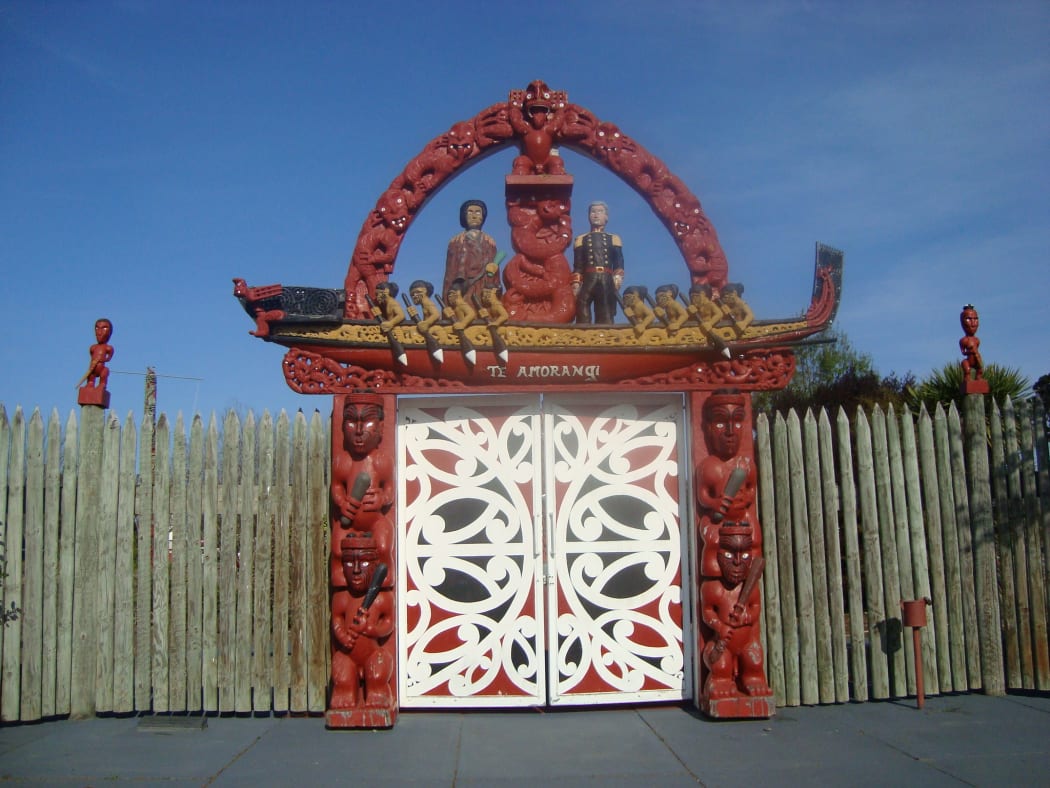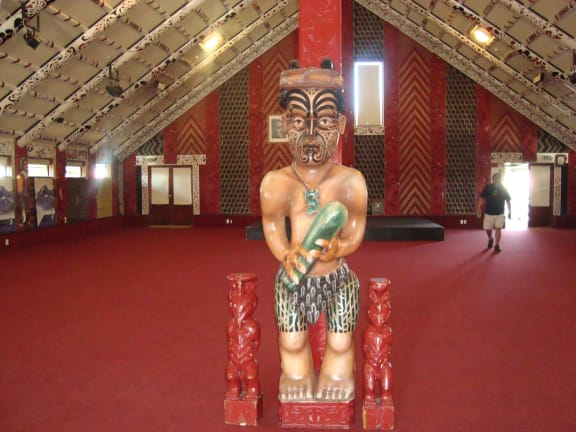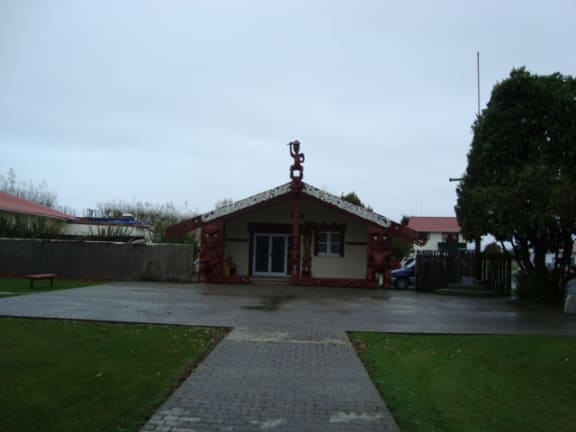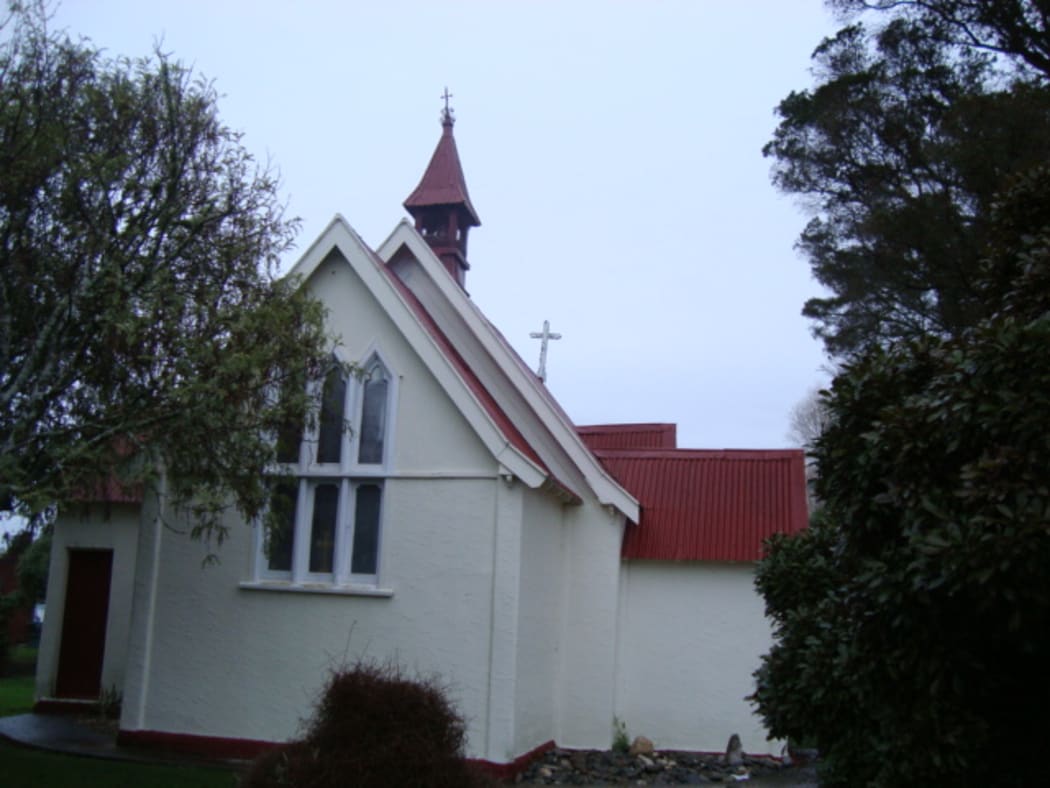
The tomokanga (entrance gate) at Nga Hau e Wha Marae, Christchurch. Photo: RNZ/Justine Murray
Mike Kaui and Pete Mason talk about the history of Nga Hau e Wha Marae in Christchurch, and Rima Piggott shares the story of Te Awhina Marae in Motueka for the series Ngā Marae o te Motu (Marae of this Country).
(This series was originally broadcast in 2009 and 2010)
Nga Hau e Wha Marae prides itself on being a marae for all citizens, but the idea of building it stirred up mass opposition in the late 1970s.
Just under 180 complaints were lodged with the then-Christchurch City Council by nearby residents in the Christchurch suburb of Aranui.
Despite this, approval to build on the land was given the go-ahead by the Planning Tribunal, and Nga Hau e Wha was officially opened in 1990 by Labour politician Koro Wetere.
Kaumatua Mike Kaui and Pete Mason remember the complex was largely built by people who lived on the streets and seized the opportunity given to them by Tuhoe carver John Rua. They were given food and accomodation onsite in exchange for their work.
The landscape and designs of the carved pou and panels depict the theme of being a marae for all people.
Near the front of the marae, is the four-metre high pou (carved pole) Te Pou Maumahara dedicated to the men who died overseas during World War I and II.

Mike Kaui and Pete Mason of Nga Hau e Wha Marae, Christchurch. Photo: RNZ/Justine Murray
“It was something that our old people from the 28th Māori Battalion wanted to be erected in memory of the fallen from World War I right until the present today. Every Sunday before Anzac Day we hold a memorial parade” – Pete Mason

Inside the Whare Tupuna Aoraki, Nga Hau e Wha Marae. Photo: RNZ/Justine Murray
Aoraki is arguably one of the largest meeting houses in the country, the site also boasts a Whare Wānanga a space utilised by its young people, a dining hall and a gazebo. The carved pou on the grounds and above entrance way depict the relationship between Māori and Pākeha and are the symbol of the marae being a space for everyone.
Te Rūnanga o Nga Maata Waka is the Urban Māori Authority which runs the marae and operates as a one-stop shop for a number of health and social services.
Te Awhina Marae, Motueka

Turangaapeke Wharenui opened in 1990. Photo: RNZ/Justine Murray
The name Miss Ingram may not strike any chords with people, but it is synonymous with the establishment of Te Awhina Marae in Motueka.
Local Kuia Larry Bailey remembers the former teacher was a staunch lady who wanted to see the Māori community come together, so gifted the empty buildings to from the marae complex.
“Miss Ingram, who was on the committee of the District Health Board at that time and they got rid of these old buildings and we were lucky to have her bring them here, the pouhaki (flagpole) she donated to the marae”.
Te Awhina Marae is not far from the small main city centre of Motueka, popular for its local produce and tobacco plantations. In 1985 there was just one building on the site and it was used to provide accommodation for the seasonal workers, host dances and social activities.
The marae is made up of several buildings including Te Ara toki (carving building) the local hauora (health centre) and six kaumatua flats.
John Mutu of Ngati Tama and Ngāti Mutunga carved the meeting house Turangaapeke.
The Anglican Church Te Ahurewa is at the rear of the meeting house and was the second church on the land - the first building is circa 1829. The marae runs services on one Sunday of the month.
The local iwi are Ngāti Rārua and Te Ātiawa.

Te Āhurewa Church at Te Awhina Marae, Motueka. Photo: RNZ/Justine Murray

